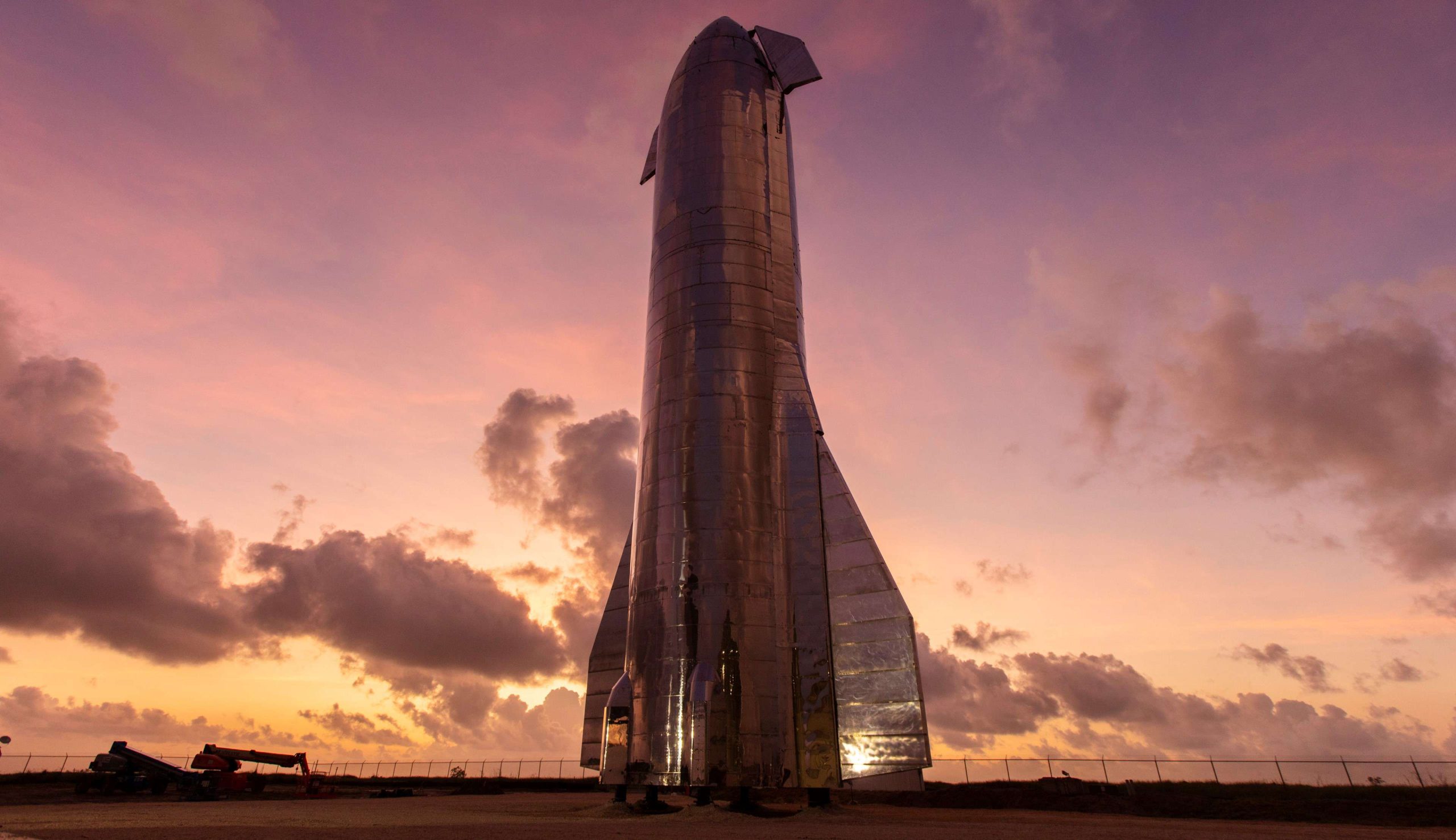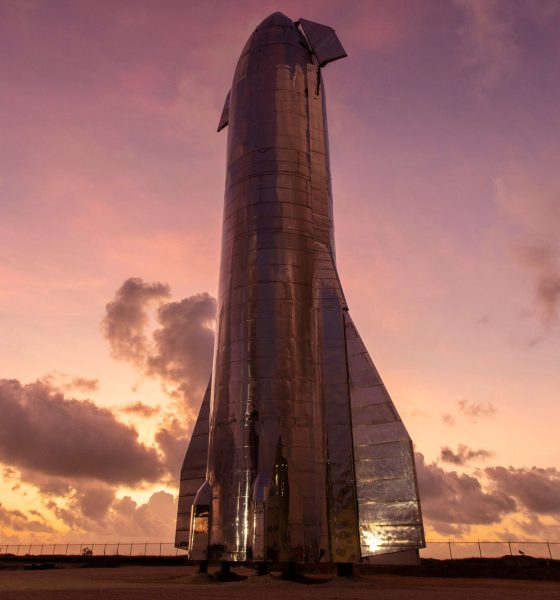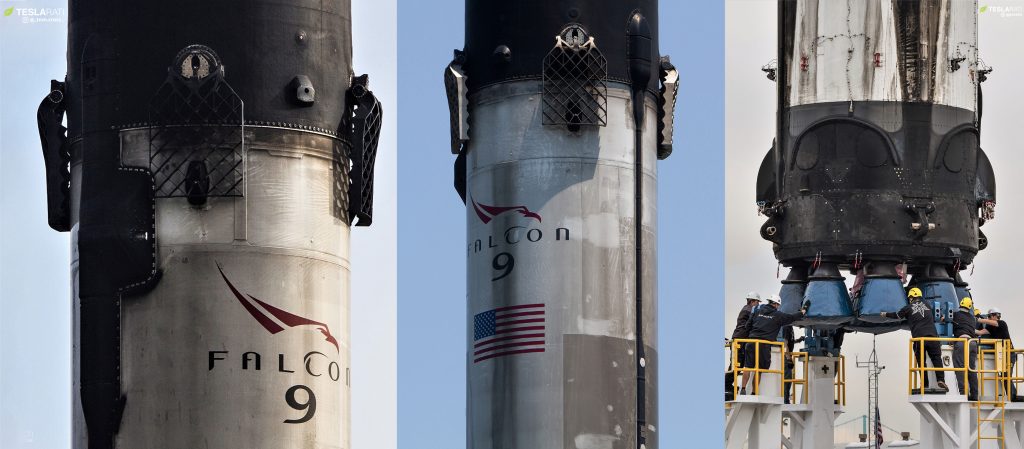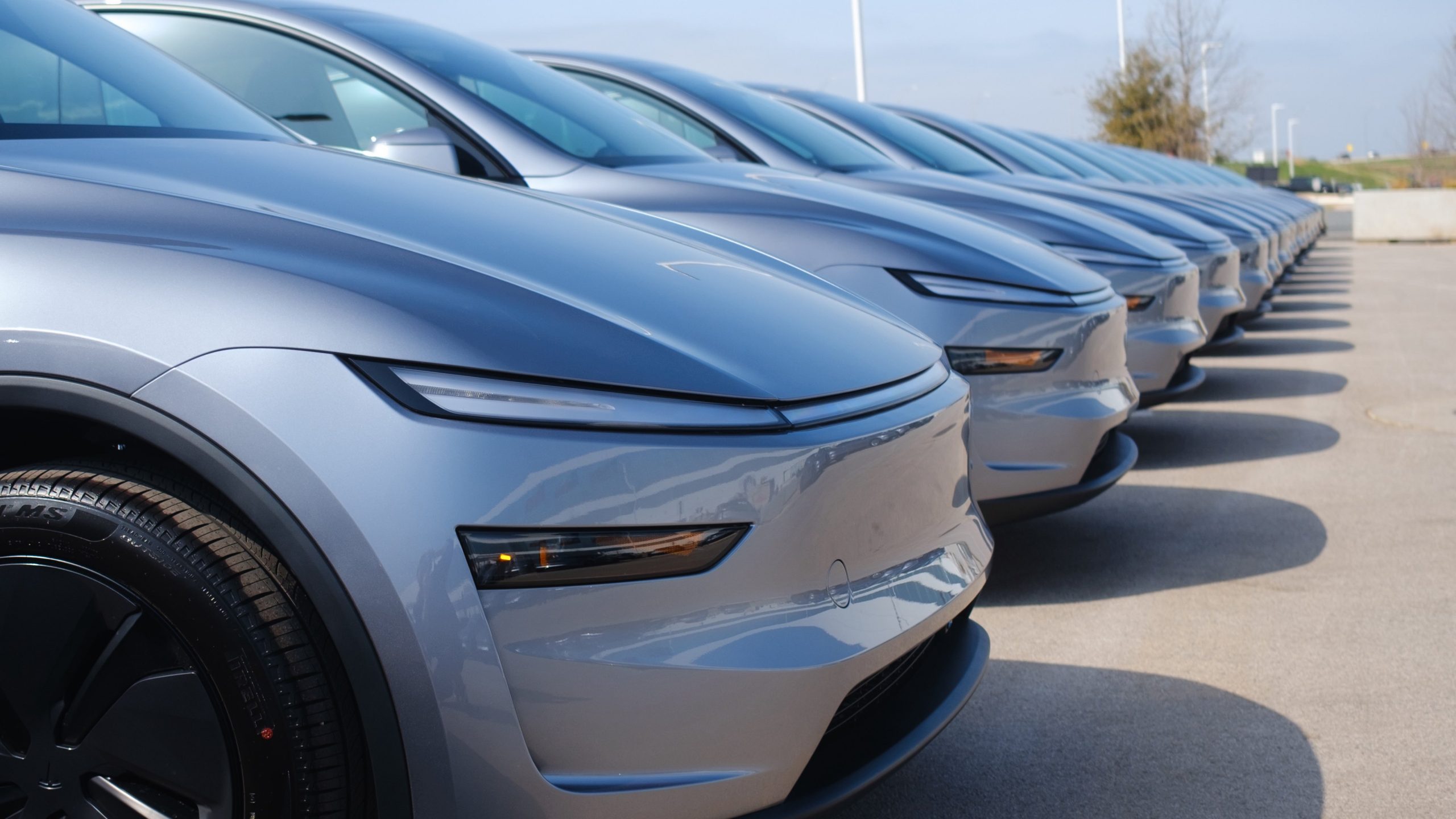

News
SpaceX Mars landing expert talks Starship recovery challenges in new interview
Formerly responsible for developing Falcon 9 (and Heavy) into the routinely-landing reusable rocket it is today, senior SpaceX engineer Lars Blackmore says he now has one primary focus: figuring out how to land Starship on Earth, the Moon, and Mars.
A graduate of University of Cambridge and MIT, the latter of which interviewed him on October 23rd for an “Alumni Stories” blog, Lars Blackmore has become famous for his groundbreaking work in guidance, navigation, and control (GNC). After graduating with honors from Cambridge and earning a PhD from MIT, Dr. Blackmore joined NASA in 2007 and immersed himself in “precision Mars landing”, part of a more general focus on figuring out how to autonomously control vehicles in uncertain conditions.
In his last year at NASA, Blackmore co-invented an algorithm known as G-FOLD (Guidance for Fuel Optimal Large Divert) that should theoretically enable precision landings on Mars, improving the state of the art by two full orders of magnitude (+/- 10 km to +/- 100 m). In 2011, he departed NASA and joined SpaceX, where he lead the development of the GNC technology needed to successfully and reliably recovery Falcon 9 boosters. Although the same could be said for any number of critical, groundbreaking systems that had to be developed, the onboard software that autonomously guides Falcon 9 landings on the fly is one of many things that booster recovery and reuse would be wholly impossible without.
After numerous failed attempts, all part SpaceX’s preferred learning process, Falcon 9 successfully landed for the first time on December 21st, 2015. As they say, the rest is history: in the roughly four years since that milestone landing, SpaceX has successfully completed 57 orbital launches, recovered boosters 43 more times, and reused flight-proven boosters on 23 launches. Since that first success, more than half of all SpaceX launches have been followed by a successful booster landing (or two).

Back to Mars
In 2018, Dr. Blackmore officially took on a new full-time role as SpaceX’s Principal Mars Landing Engineer. As the namesake suggests, this meant handing (now semi-routine) Falcon 9 and Heavy GNC development to a strong team and beginning to tackle an array of new problems that will need to be solved for SpaceX to reach the Moon, Mars, and beyond.
Following radical design modifications made to Starship in 2018 and again in 2019, SpaceX is pursuing a radically different method of recovery with Starship (the upper stage), while Super Heavy will more directly follow in the footsteps of Falcon 9/Heavy. Starship, however, is being designed to perform a guided descent more akin to a skydiver falling straight down, using flaps at its nose and tail (explicitly “not wings”) to accurately guide its fall.
As little as a few hundred meters above the ground, Starship will then perform a radical maneuver, igniting its Raptor engines to flip around, burn in the opposite direction to counteract that sideways boost, and finally coming in for a precise landing on Earth/Mars/the Moon.
Beyond the new GNC software and knowledge needed to make that maneuver real, Blackmore is also responsible for Starship atmospheric entry, no less critical to enabling precise, repeatable landings from orbital velocity to touchdown. In his recent interview with University of Cambridge staff, Lars revealed that his role as Principal Mars Landing Engineer involved a far wider scope than his previous GNC-centered work, with the goal instead being to design a launch vehicle (Starship) from the ground up to be easily recovered and reused. Falcon 9 Block 5 may be radically different than the ‘V1.0’ rocket that debuted in 2010, but it’s still ultimately a product of retroactive engineering.
With Starship and Super Heavy, SpaceX instead wants to take the vast wealth of knowledge and experience gained from F9/FH and build the vehicle from the ground up to be optimized for full reuse. Ultimately, Dr. Blackmore stated that “landing Starship will be much harder than landing Falcon 9, but if [SpaceX] can do it, it will be revolutionary.”
Check out Teslarati’s Marketplace! We offer Tesla accessories, including for the Tesla Cybertruck and Tesla Model 3.

News
Tesla expands Model 3 lineup in Europe with most affordable variant yet
The Model 3 Standard still delivers more than 300 miles of range, potentially making it an attractive option for budget-conscious buyers.

Tesla has introduced a lower-priced Model 3 variant in Europe, expanding the lineup just two months after the vehicle’s U.S. debut. The Model 3 Standard still delivers more than 300 miles (480 km) of range, potentially making it an attractive option for budget-conscious buyers.
Tesla’s pricing strategy
The Model 3 Standard arrives as Tesla contends with declining registrations in several countries across Europe, where sales have not fully offset shifting consumer preferences. Many buyers have turned to options such as Volkswagen’s ID.3 and BYD’s Atto 3, both of which have benefited from aggressive pricing.
By removing select premium finishes and features, Tesla positioned the new Model 3 Standard as an “ultra-low cost of ownership” option of its all-electric sedan. Pricing comes in at €37,970 in Germany, NOK 330,056 in Norway, and SEK 449,990 in Sweden, depending on market. This places the Model 3 Standard well below the “premium” Model 3 trim, which starts at €45,970 in Germany.
Deliveries for the Standard model are expected to begin in the first quarter of 2026, giving Tesla an entry-level foothold in a segment that’s increasingly defined by sub-€40,000 offerings.
Tesla’s affordable vehicle push
The low-cost Model 3 follows October’s launch of a similarly positioned Model Y variant, signaling a broader shift in Tesla’s product strategy. While CEO Elon Musk has moved the company toward AI-driven initiatives such as robotaxis and humanoid robots, lower-priced vehicles remain necessary to support the company’s revenue in the near term.
Reports have indicated that Tesla previously abandoned plans for an all-new $25,000 EV, with the company opting to create cheaper versions of existing platforms instead. Analysts have flagged possible cannibalization of higher-margin models, but the move aims to counter an influx of aggressively priced entrants from China and Europe, many of which sell below $30,000. With the new Model 3 Standard, Tesla is reinforcing its volume strategy in Europe’s increasingly competitive EV landscape.
News
Tesla FSD (Supervised) stuns Germany’s biggest car magazine
FSD Supervised recognized construction zones, braked early for pedestrians, and yielded politely on narrow streets.

Tesla’s upcoming FSD Supervised system, set for a European debut pending regulatory approval, is showing notably refined behavior in real-world testing, including construction zones, pedestrian detection, and lane changes, as per a recent demonstration ride in Berlin.
While the system still required driver oversight, its smooth braking, steering, and decision-making illustrated how far Tesla’s driver-assistance technology has advanced ahead of a potential 2026 rollout.
FSD’s maturity in dense city driving
During the Berlin test ride with Auto Bild, Germany’s largest automotive publication, a Tesla Model 3 running FSD handled complex traffic with minimal intervention, autonomously managing braking, acceleration, steering, and overtaking up to 140 km/h. It recognized construction zones, braked early for pedestrians, and yielded politely on narrow streets.
Only one manual override was required when the system misread a converted one-way route, an example, Tesla stated, of the continuous learning baked into its vision-based architecture.
Robin Hornig of Auto Bild summed up his experience with FSD Supervised with a glowing review of the system. As per the reporter, FSD Supervised already exceeds humans with its all-around vision. “Tesla FSD Supervised sees more than I do. It doesn’t get distracted and never gets tired. I like to think I’m a good driver, but I can’t match this system’s all-around vision. It’s at its best when both work together: my experience and the Tesla’s constant attention,” the journalist wrote.
Tesla FSD in Europe
FSD Supervised is still a driver-assistance system rather than autonomous driving. Still, Auto Bild noted that Tesla’s 360-degree camera suite, constant monitoring, and high computing power mark a sizable leap from earlier iterations. Already active in the U.S., China, and several other regions, the system is currently navigating Europe’s approval pipeline. Tesla has applied for an exemption in the Netherlands, aiming to launch the feature through a free software update as early as February 2026.
What Tesla demonstrated in Berlin mirrors capabilities already common in China and the U.S., where rival automakers have rolled out hands-free or city-navigation systems. Europe, however, remains behind due to a stricter certification environment, though Tesla is currently hard at work pushing for FSD Supervised’s approval in several countries in the region.
News
Tesla reliability rankings skyrocket significantly in latest assessment
“They definitely have their struggles, but by continuing to refine and not make huge changes in their models, they’re able to make more reliable vehicles, and they’ve moved up our rankings.”

Tesla ranked in the Top 10 of the most reliable car companies for 2026, as Consumer Reports’ latest index showed significant jumps from the past two years.
In 2022, Tesla ranked 27th out of 28 brands. Last year, it came in 17th.
🚨🚨 Tesla entered the Top 10 in Consumer Reports’ list of reliable carmakers for the first time
In the past two years, Tesla has ranked 17th in 2024 and 27th out of 28 brands in 2022.
Subaru, BMW, Porsche, Honda, and Toyota were the Top 5 OEMs in the rankings. pic.twitter.com/z216bccVoH
— TESLARATI (@Teslarati) December 4, 2025
However, 2026’s rankings were different. CR‘s rankings officially included Tesla in the Top 10, its best performance to date.
Finishing tenth, the full Top 10 is:
- Subaru
- BMW
- Porsche
- Honda
- Toyota
- Lexus
- Lincoln
- Hyundai
- Acura
- Tesla
Tesla has had steady improvements in its build quality, and its recent refinements of the Model 3 and Model Y have not gone unnoticed.
The publication’s Senior Director of Auto Testing, Jake Fisher, said about Tesla that the company’s ability to work through the rough patches has resulted in better performance (via CNBC):
“They definitely have their struggles, but by continuing to refine and not make huge changes in their models, they’re able to make more reliable vehicles, and they’ve moved up our rankings.”
He continued to say that Tesla’s vehicles have become more reliable over time, and its decision to avoid making any significant changes to its bread-and-butter vehicles has benefited its performance in these rankings.
Legacy automakers tend to go overboard with changes, sometimes keeping a model name but recognizing a change in its “generation.” This leads to constant growing pains, as the changes in design require intense adjustments on the production side of things.
Instead, Tesla’s changes mostly come from a software standpoint, which are delivered through Over-the-Air updates, which improve the vehicle’s functionality or add new features.
Only one Tesla vehicle scored below average in Consumer Reports’ rankings for 2026 was the Cybertruck. Fisher’s belief that Tesla improves its other models over time might prove to be true with Cybertruck in a few years.
He continued:
“They’re definitely improving by keeping with things and refining, but if you look at their 5- to 10-year-old models that are out there, when it comes to reliability, they’re dead last of all the brands. They’re able to improve the reliability if they don’t make major changes.”
Regarding Subaru’s gold medal placing on the podium, Fisher said:
“While Subaru models provide good performance and comfort, they also excel in areas that may not be immediately apparent during a test drive.”
Other notable brands to improve are Rivian, which bumped itself slightly from 31 to 26. Chevrolet finished 24th, GMC ended up 29th, and Ford saw itself in 18th.








